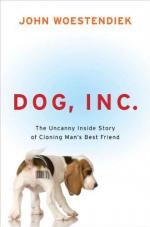|
This section contains 1,531 words (approx. 6 pages at 300 words per page) |

|
Cloning hit the news headlines in 1997 when scientists in Scotland announced they had successfully cloned a sheep, named Dolly, in 1996. Although several other animal species had been cloned in the previous 20 years, it was Dolly that caught the public's attention. Suddenly, the possibility that humans might soon be cloned jumped from the pages of science fiction stories into the mainstream press. Dolly was the first adult mammal ever cloned.
Cloning is the science of using artificial methods to create clones. A clone is a single cell, a group of cells, or an organism produced in a laboratory without sexual reproduction. In effect, the clone is an exact genetic copy of the original source, much like identical twins. There are two types of cloning. Blastomere separation, also called "twinning" after the naturally occurring process that creates identical twins, involves splitting a developing embryo soon after the egg is fertilized...
|
This section contains 1,531 words (approx. 6 pages at 300 words per page) |

|


